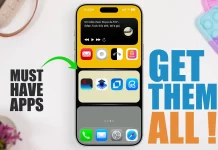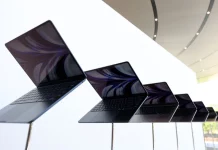Apple is known for prioritizing product quality over being first to market. Instead of rushing to launch new products, Apple focuses on delivering the best product experience, even if it means entering an existing market late. This approach was evident with both the iPod and iPhone, where Apple entered crowded markets years after competitors but quickly took the lead with superior design and functionality. A similar pattern may emerge in the foldable smartphone market.
Foldable smartphones are not a new concept, with Samsung having introduced its Galaxy Z Fold and Galaxy Z Flip devices over six years ago. While Samsung has built a loyal but relatively small customer base, foldables have yet to achieve widespread adoption. A significant barrier is the visible crease that forms on the foldable screen after repeated use, which many premium smartphone users find unacceptable.
Apple’s upcoming foldable iPhone reportedly addresses this crease issue. According to the Economic Daily News, Apple’s foldable display design avoids the creasing problem seen in current foldables. Sources indicate that the technology is beyond the experimental phase and is moving toward engineering verification and pre-mass production. Foxconn, Apple’s production partner, has already allocated a dedicated production line for this foldable iPhone, which some speculate will be named the iPhone Fold.
The solution to the crease problem reportedly involves integrating a metal plate within the display to distribute and control bending stress, preventing the material from exceeding its elastic limit and reducing crease formation. Analyst Ming-Chi Kuo noted that the manufacturing process will use laser drilling to create microstructures that further enhance crease resistance. The hinge may feature Liquidmetal, a material known for its exceptional strength-to-weight ratio and durability, being 2.5 times more resistant to deformation than titanium alloy. Beyond the display and hinge innovations, the iPhone Fold is also expected to feature Apple’s C2 modem, promising faster network speeds and improved battery efficiency.
Design-wise, the iPhone Fold is said to open horizontally, transforming into a device similar in size to a small iPad, while when closed, it resembles two stacked iPhone Air models. User authentication might rely on a Touch ID sensor on the device’s side instead of Face ID. If production proceeds smoothly, the device is expected to launch in September 2026, potentially redefining the foldable smartphone experience with a crease-free design and best-in-class performance.





